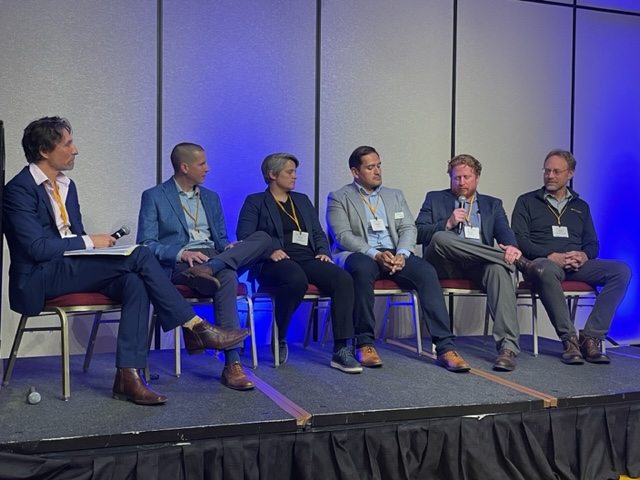PVPMC 2024 key takeaways
We invited 5 panelists from a cross section of the solar industry to talk about the financial value of accurate modelling at the PVPMC 2024.

· Keith McIntosh · 3 min read
P90 and the financial value of accurate modelling
It was fabulous to hear from five invited panellists at the PVPMC last week. They spoke about the accuracy of yield forecasts, and how that accuracy affects the cost of financing a solar project.
There was much to absorb from the talks and the panel discussion that followed.
We learned how the financial value of forecast accuracy depends on the stakeholder. Perhaps most importantly, we learned that one of these stakeholders, tax-equity investors, do not trust the accuracy of the forecasts they receive! Consequently, the cost of financing solar projects is higher than it otherwise might be.
Much can be done to improve this situation, but before we outline our thoughts, here are some major takeaways from each of the five panellists:
Mark Reusser (ICF) described the complexity in determining yield uncertainty, and noted that the competing interests of developers, EPCs, lenders and investors encourages IEs to pursue accuracy.
Ken Elser (Wells Fargo) decried the current state of yield forecasts, stating that neither their accuracy nor precision is adequate, and that this increases the financial risk for lenders and investors, thereby raising the cost of financing solar projects.
Armando Solis (Lightsource BP) illustrated how the tuning of forecast models with ground measurements had increased forecast accuracy, and he quantified the resulting returns.
Emily Greeno (Avangrid) explained how self-financed projects are less reliant on downside P values (P90, P95, etc.) than external-financed projects. Nevertheless, yield uncertainty remained important, particularly for long-term forecasts, which are influenced by factors like climate change and degradation.
Cliff Hansen (Sandia) emphasised how modeller skill remains a principal driver of yield error. Even when using the same yield software, different modellers can predict very different yields.
And all speakers stressed the strong need to improve and validate models using operational data.
Since returning from the PVPMC, the SunSolve team has concluded that we have much to contribute in this field.
We’ve learned that many sources of uncertainty need to be better quantified. The most important of these are availability, curtailment, weather, degradation and, to a lesser extent, the optical and thermal models.
We’ve learned that the method to determine P-values from these uncertainties can be greatly improved. This might require the application of Weibull functions, skewed Gaussians, stochastic solutions, and new software.
And we’ve learned that improved forecasting methodologies will not reduce the cost of financing unless they are also understood and accepted by the financiers. That acceptance will, of course, only be gained if the improved forecasts are consistent with operational data.
We believe that we can tackle these problems by working with a variety of partners and by applying our SunSolve software and analytical skills.
It will be by increasing accuracy—and convincing lenders and investors of that increased accuracy—that we modellers can reduce the cost of financing and, by extension, the cost of solar power.
You can find the slides for the talks under Session 7 on the PVPMC website.